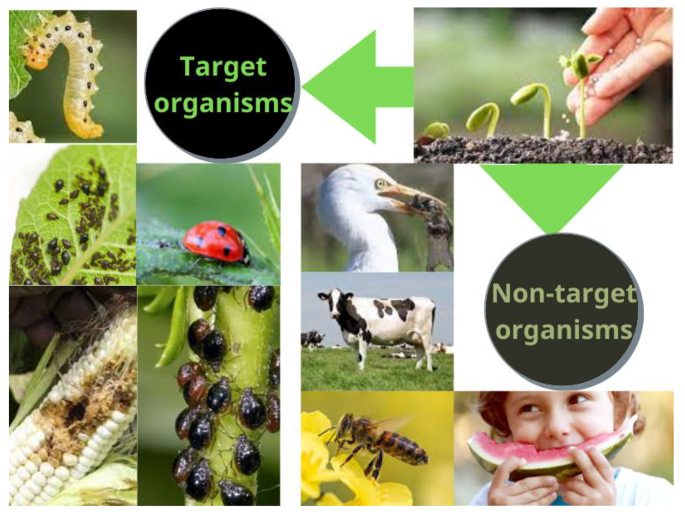Some Known Incorrect Statements About Eco Bed Bug Exterminators Dc
Some Known Incorrect Statements About Eco Bed Bug Exterminators Dc
Blog Article
Fascination About Eco Bed Bug Exterminators Dc
Table of ContentsFacts About Eco Bed Bug Exterminators Dc RevealedEco Bed Bug Exterminators Dc for DummiesGetting The Eco Bed Bug Exterminators Dc To WorkEverything about Eco Bed Bug Exterminators DcRumored Buzz on Eco Bed Bug Exterminators Dc
Since chemicals are poisonous, they are additionally possibly dangerous to humans, animals, other organisms, and the setting. Therefore, people that make use of pesticides or consistently come in contact with them have to comprehend the relative toxicity, prospective health and wellness impacts, and preventative steps to minimize direct exposure to the products they make use of. Threat, or risk, of utilizing pesticides is the possibility for injury, or the degree of danger associated with utilizing a chemical under a provided collection of problems.
Nevertheless, applicators can lessen or nearly eliminate direct exposure-- and hence reduce threat-- by following the label instructions, using personal protective garments and tools (PPE), and taking care of the chemical correctly. Even more than 95 percent of all pesticide exposures come from dermal direct exposure, largely to the hands and lower arms. By putting on a set of unlined, chemical-resistant handwear covers, this kind of exposure can be nearly removed.
The dangerous impacts that occur from a single direct exposure by any kind of route of access are called "acute results." The four courses of direct exposure are dermal (skin), inhalation (lungs), oral (mouth), and the eyes. Severe toxicity is established by taking a look at the dermal toxicity, inhalation toxicity, and oral poisoning of examination pets.
Eco Bed Bug Exterminators Dc Fundamentals Explained
Intense poisoning is measured as the quantity or concentration of a toxicant-- the a.i.-- called for to kill 50 percent of the pets in a test populace. This measure is typically expressed as the LD50 (deadly dosage 50) or the LC50 (deadly focus 50). Furthermore, the LD50 and LC50 values are based upon a single dose and are taped in milligrams of chemical per kilo of body weight (mg/kg) of the test animal or partially per million (ppm).
The reduced the LD50 or LC50 worth of a chemical product, the greater its poisoning to humans and animals. Chemicals with a high LD50 are the least hazardous to human beings if used according to the instructions on the item tag. The chronic toxicity of a chemical is determined by subjecting guinea pig to lasting exposure to the active ingredient.
The persistent poisoning of a chemical is more tough than intense toxicity to establish via laboratory evaluation. Products are categorized on the basis of their family member severe poisoning (their LD50 or LC50 values). Chemicals that are identified as very poisonous (Toxicity Group I) on the basis of either dental, facial, or inhalation poisoning have to have the signal words risk and poisonous substance printed in red with a skull and crossbones symbol plainly presented on the front panel of the bundle tag.
The intense (single dosage) dental LD50 for pesticide products in this group varies from a trace total up to 50 mg/kg. Exposure of a few declines of a material taken orally might be deadly to a 150-pound individual. https://trello.com/w/ecobedbug3xt_. Some pesticide products have simply the signal word threat, which tells you absolutely nothing about the intense poisoning, just that the product can cause severe eye damage or severe skin irritability
The Greatest Guide To Eco Bed Bug Exterminators Dc
In this category, the intense oral LD50 arrays from 50 to 500 mg/kg. A tsp to an ounce of this product could be fatal to a 150-pound individual (bed bug treatment). Pesticide items identified as either somewhat harmful or reasonably safe (Toxicity Classifications III and IV) are called for to have the signal word CAUTION on the pesticide tag

All pesticide toxicity valuesPoisoning including the LD50, can be found on discovered product's Item Safety Data Sheet InformationMSDS). Chemical tags and MSDS can be gotten from stores or makes - https://www.tripadvisor.in/Profile/ecobedbug3xt. The signs of chemical poisoning can range from a light skin irritability to coma or even fatality.
Since of prospective health problems, chemical users and handlers must identify the usual indications and symptoms of chemical poisoning. The effects, or signs, of pesticide poisoning can be broadly defined as either topical or systemic.
4 Simple Techniques For Eco Bed Bug Exterminators Dc
Dermatitis, or swelling of the skin, is accepted as the most generally reported topical impact related to pesticide exposure. Signs of dermatitis range from reddening of the skin to breakouts and/or sores. Some individuals often tend to cough, hiss, or sneeze when revealed to pesticide sprays. Some people react to the strong odor and annoying effects of petroleum distillates made use of as providers in chemical products.
This symptom typically subsides within a few mins after a person is removed from the exposure to the irritant. A response to a pesticide product that causes somebody not just to sneeze and cough but likewise to establish serious intense respiratory system signs is extra likely to be a real hypersensitivity or sensitive response.
Systemic impacts are quite various from topical effects. They often occur far from the initial point of call Read Full Report as a result of the chemical being soaked up into and dispersed throughout the body. Systemic effects frequently include nausea or vomiting, vomiting, exhaustion, frustration, and intestinal problems. In advanced poisoning situations, the person might experience adjustments in heart rate, difficulty breathing, convulsions, and coma, which could bring about fatality.
Report this page